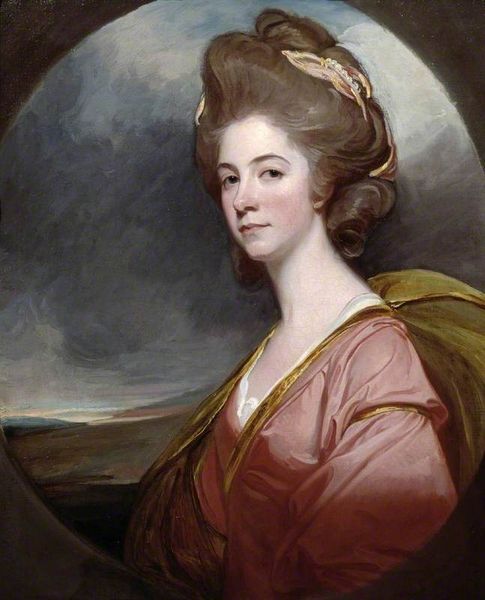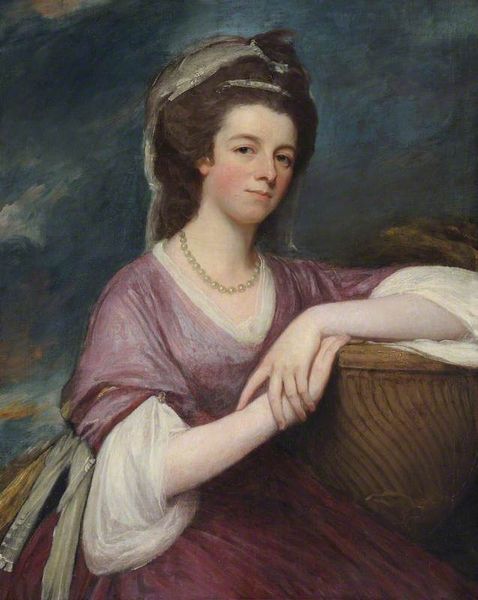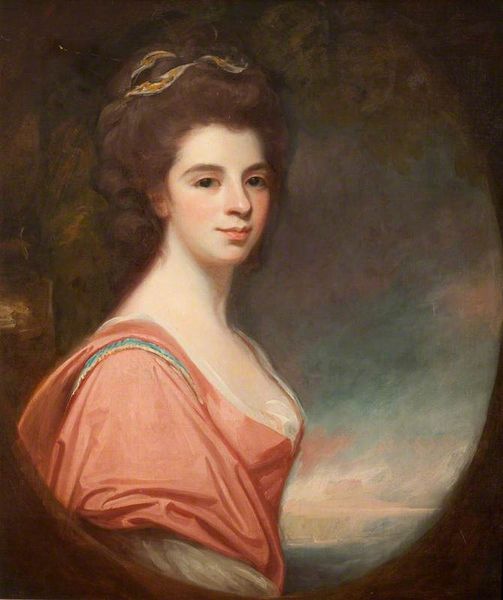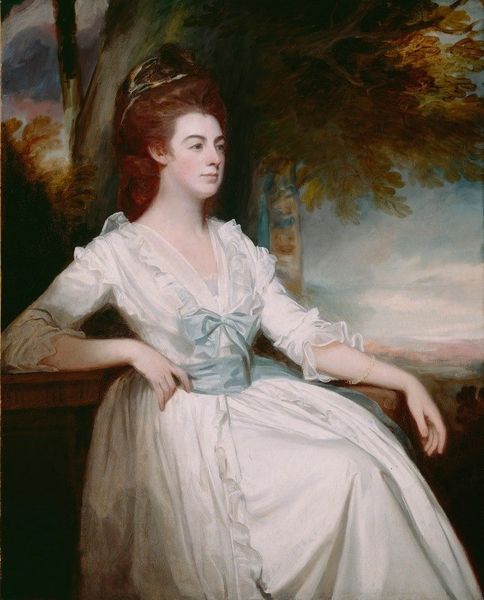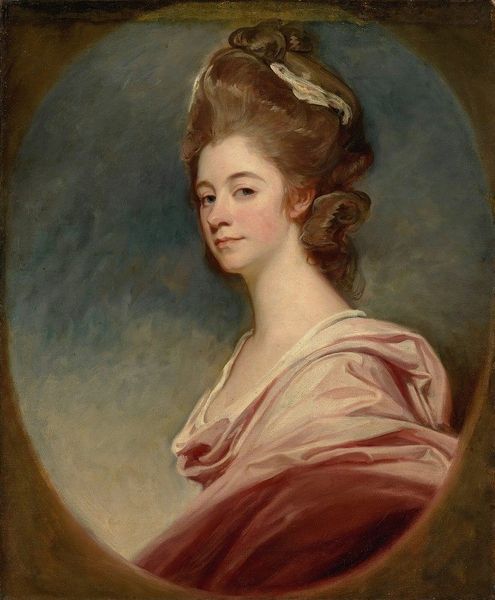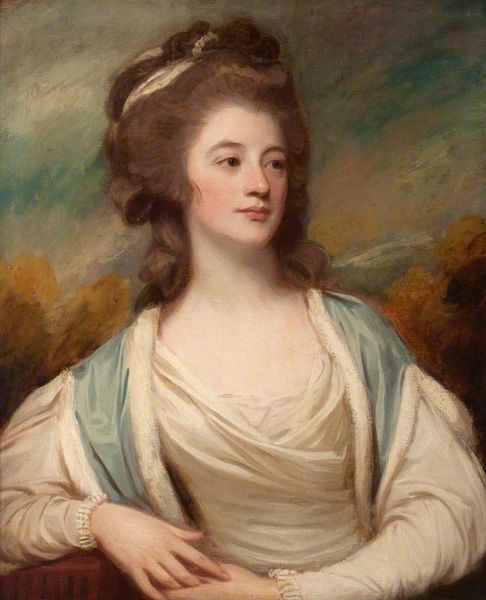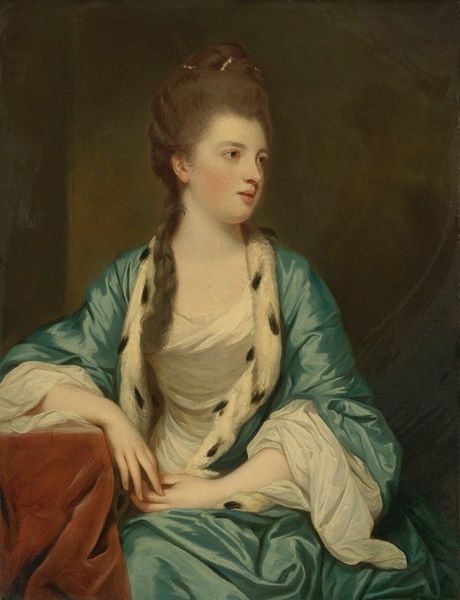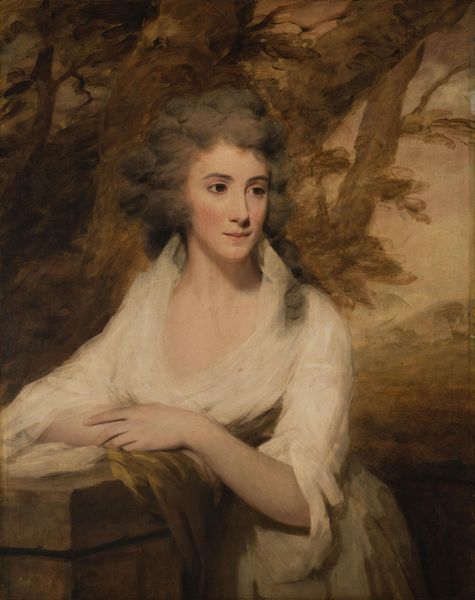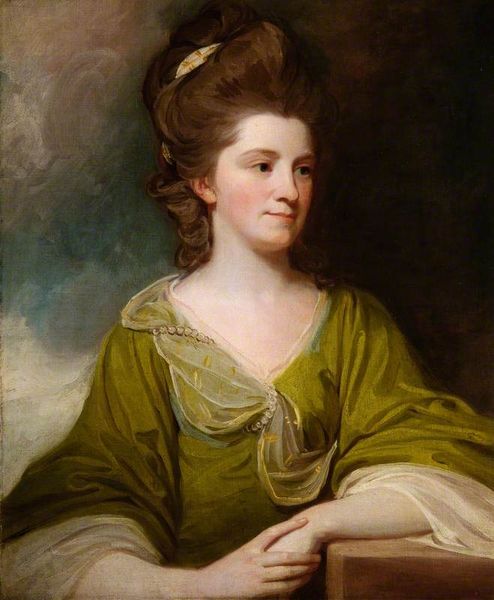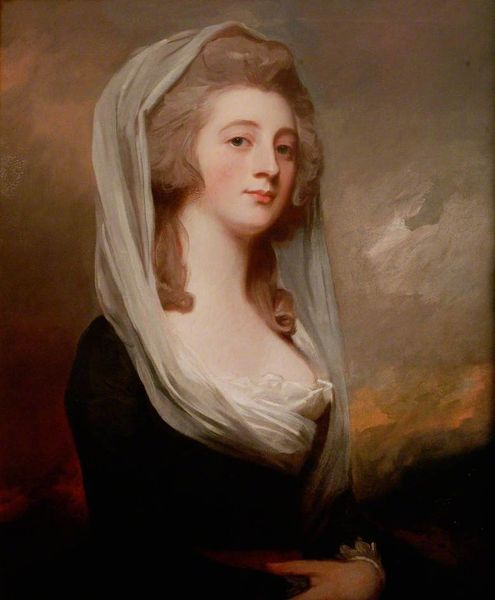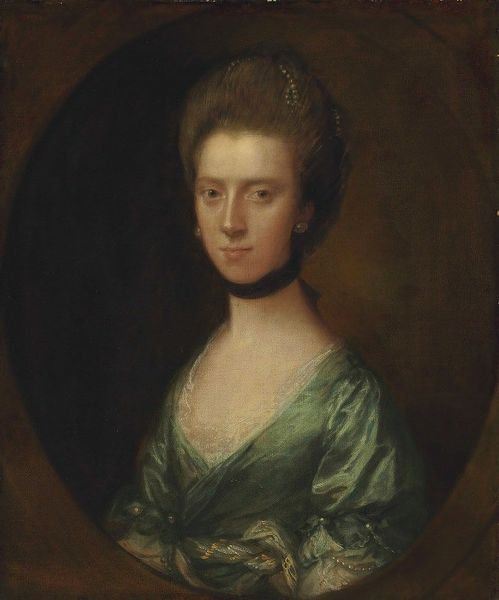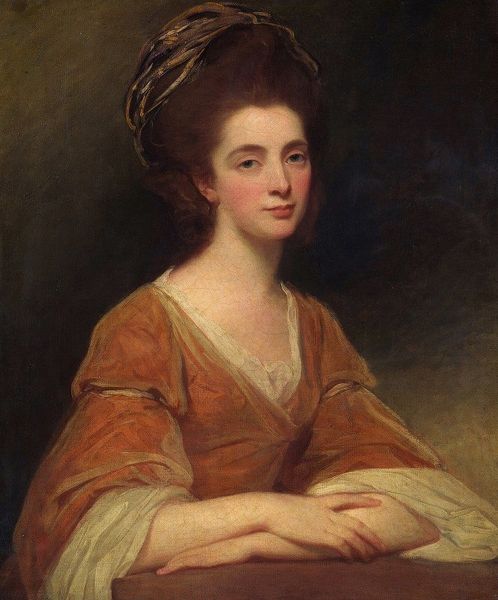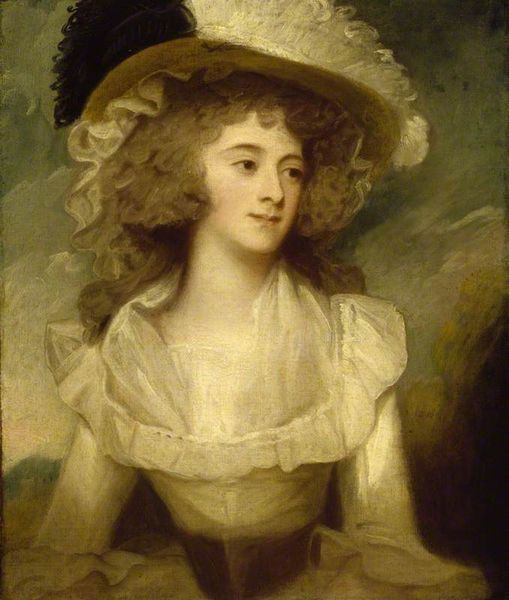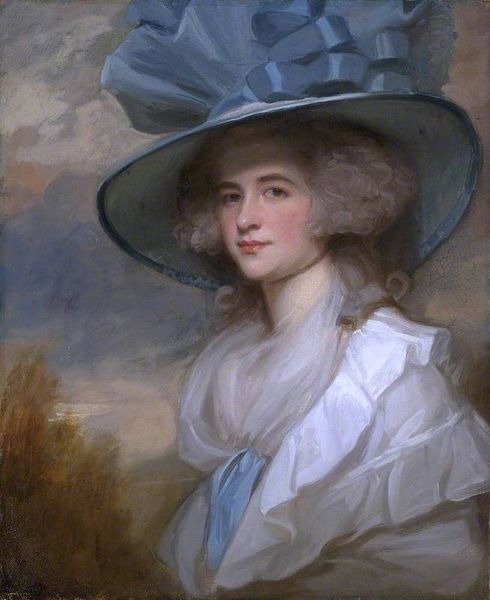
Copyright: Public domain
George Romney captured Elizabeth, Countess of Craven, in oil with a composition that evokes classical antiquity. Her simple drapery and hairstyle adorned with wheat are not merely decorative, but loaded with meaning. Wheat, historically, is tied to Demeter, the Greek goddess of agriculture, fertility, and harvest. Often depicted with a sheaf of wheat, she embodies nourishment and life. But, consider how the symbolic language has shifted: from ancient goddesses to adornments for an 18th-century noblewoman. This choice could represent her association with the ideals of bounty and nature or perhaps hints at a deeper aspiration towards classical virtues. The wheat motif, like a recurring dream, persists through epochs, transforming yet still resonating with primal human concerns. Its presence in Elizabeth's portrait, a whisper from the past, echoes in our present, revealing how symbols transcend time, continually remolding themselves in the collective consciousness.
Comments
No comments
Be the first to comment and join the conversation on the ultimate creative platform.
